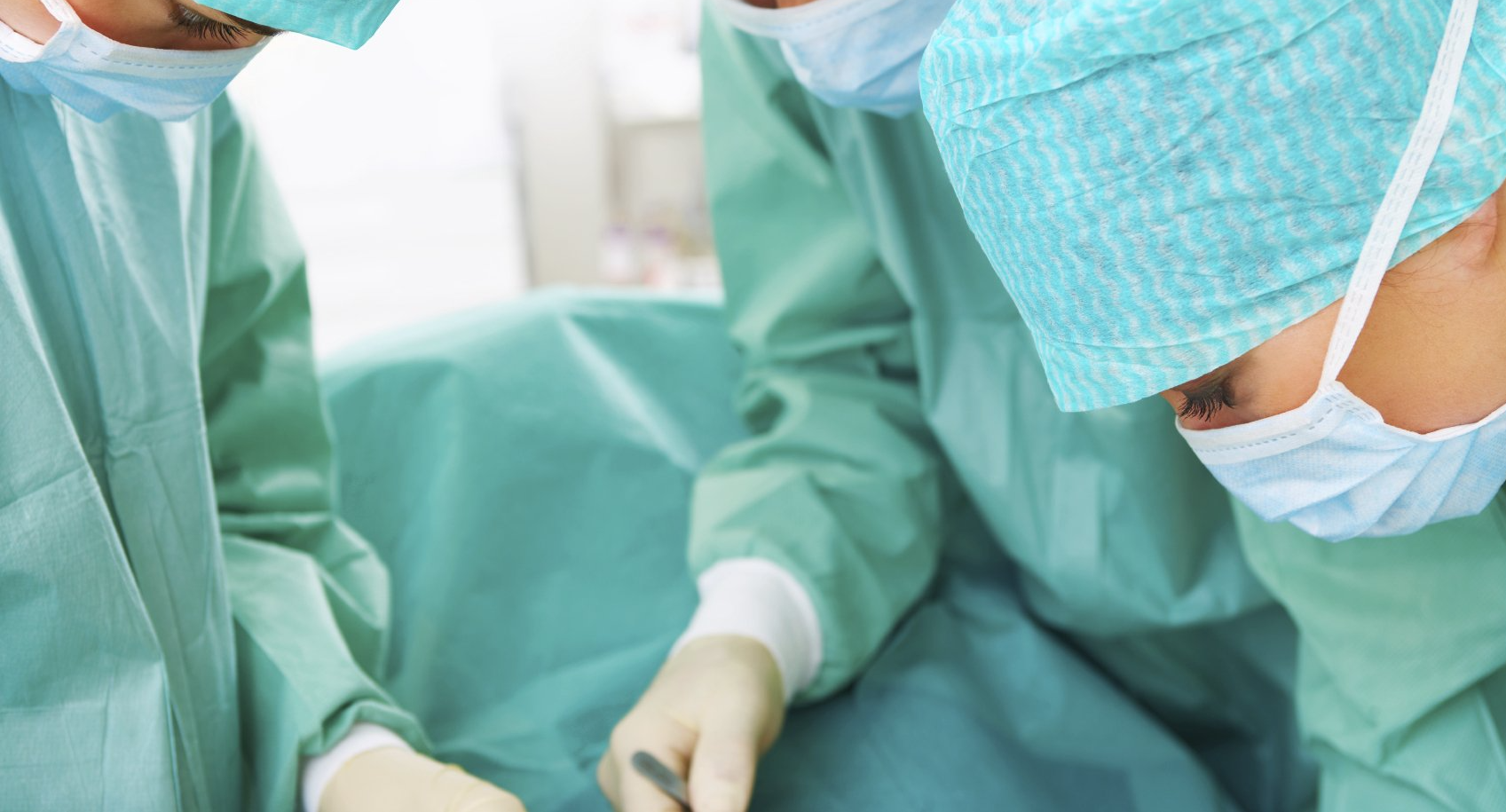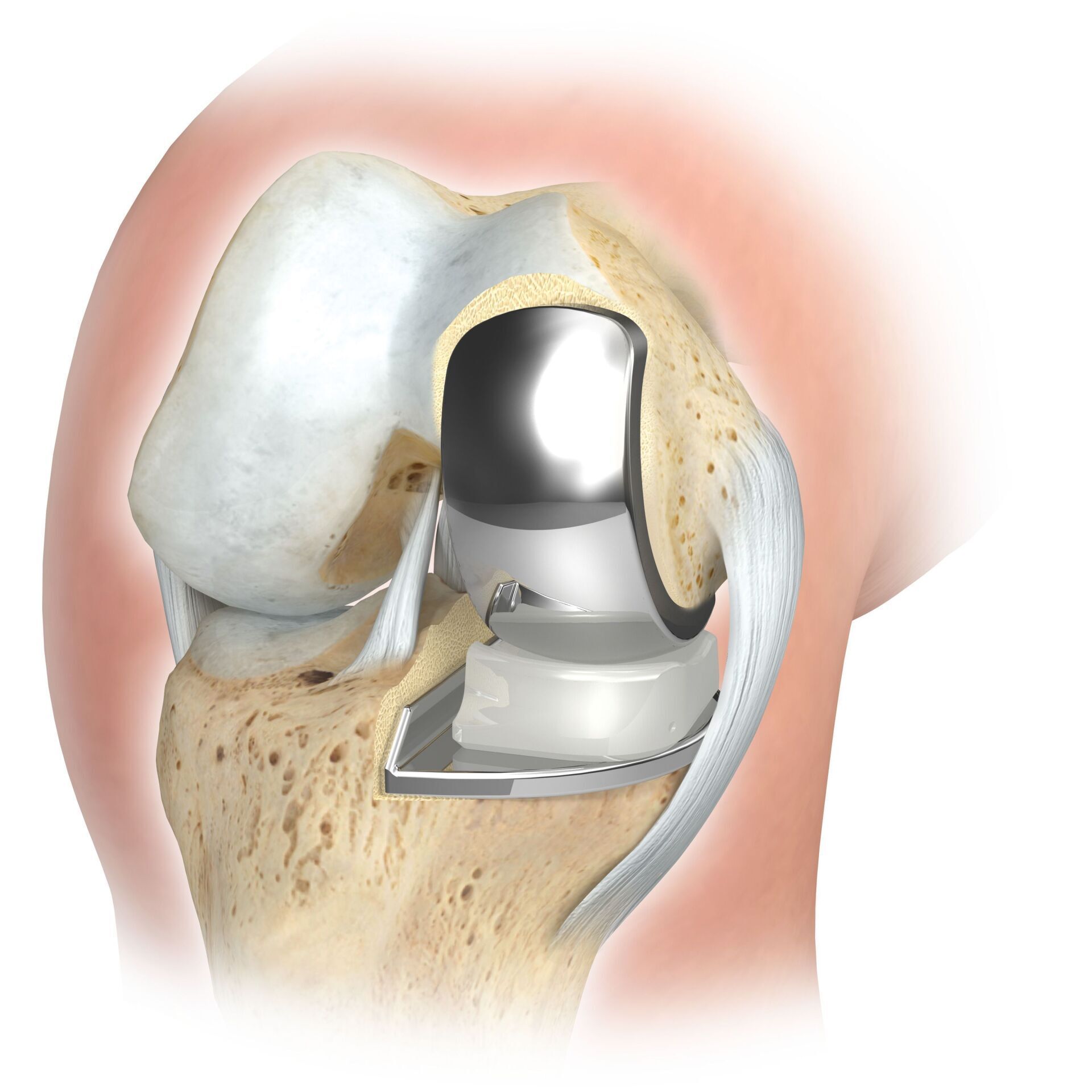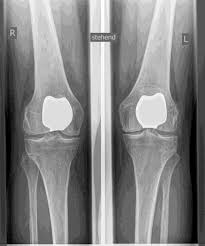JOINT REPLACEMENT: TKA KNEE
ARTHROSIS KNEE

ALL IMAGES Courtesy of Zimmer Biomet and Smith&Nephew
The knee joint is often depicted as a simple hinge joint, but upon closer inspection it is an extremely complex joint with a rotary sliding mechanism and many important ligaments. TREATMENT SHOULD BE PERFORMED BY A KNEE SPECIALIST.
DUE TO the high level of stress to which the knee joints are exposed, signs of wear and tear often occur over the course of life, resulting in significant discomfort and restrictions on the quality of life. Early sports injuries, misalignments or obesity significantly promote this development.
In contrast to the hip joint, a so-called ball joint, in which the entire joint is always affected, only individual compartments of the knee joint (e.g. on the inside or behind the kneecap) can be treated.
AS PART OF THE THERAPY OF KNEE JOINT ARTHROSIS (Knee osteoarthritis), SURGICAL INTERVENTIONS ALSO BE NECESSARY IN ADDITION TO CONSERVATIVE MEASURES:
- JOINT PRESERVING OPERATIONS ON THE KNEE JOINT (CORRECTION OF MISCELLANEOUS POSITIONS AND ANATOMIC VARIANTS, MOSTLY BY MEANS OF MINIMAL-INVASIVE JOINT MIRROWROOM (ARTHROSCOPY), SOMETIMES ALSO BY MEANS OF JOINT OPENING (MINI-OPEN).
- ENDOPROSTHETIC OPERATIONS ON THE KNEE JOINT (REPLACEMENT OF THE DESTROYED PARTS OF THE JOINT WITH ARTIFICIAL IMPLANTS MADE OF METAL AND HIGHLY CROSS-LINKED PLASTIC).
Artificial knee joints are referred to as full prostheses and partial prostheses. I carefully check beforehand which prosthesis is suitable for you based on the clinical examination, as well as on the basis of X-rays or MRI images.
Artificial joint replacement is a very successful and reliable treatment option in the advanced stages of osteoarthritis.
- Cemented or cement-free partial joint replacement using slide prostheses (inside or outside)
- Cemented partial joint replacement using PFJ or Wave prosthesis ( back kneecap replacement )
- Cemented complete surface replacement (classic: the “ knee prosthesis ”)
- EXTRA Stabilizing implants or axis-guided prostheses
- INLAYS as a meniscus replacement made of
highly cross-linked polyethylene

During the operation, the knee joint is accessed from the front and the knee is bent and extended several times during the operation. The outer and inner ligaments and, in some cases, the cruciate ligaments are carefully protected during the operation.
To ensure that you have as little pain as possible after the operation, pain medication is injected during the operation (LIA = local infiltration anesthesia).
KNEE PROSTHESIS IN MAINZ AND WIESBADEN IN THE ENDOPROSTHETICUM
SLIDE PROSTHESIS
Partial joint replacement the knee joint is possible in all areas of the joint, but is most often carried out on the inside of the knee joint and is often colloquially referred to as a sled prosthesis . Similar to the full denture, the defective cartilage is replaced with a new surface and a plastic inlay is inserted in between. For a partial prosthesis, all ligament structures, especially the cruciate ligaments, must be largely intact.
SURFACE REPLACEMENT
TKA (ARTIFICIAL KNEE JOINT)
The artificial knee joint replaces the cartilage surface that has been destroyed by osteoarthritis.
The underlying bone on the femur and tibial head remains intact. Some compare a modern artificial knee joint to a crowning of a tooth; the exact term is the so-called
bicondylar resurfacing. Between the new surfaces on the upper and lower leg is the so-called inlay made of a specially hardened white plastic, which can be seen in the X-ray image as the distance between the metal parts.

SMALL IMPLANTS / REPLACEMENT OF THE KNEAP JOINT
Disturbances in mobility or instability as well as the shape of the kneecap (dysplasia) can lead to cartilage damage and osteoarthritis ISOLATED IN THE patellofemoral joint.
IF THE OTHER COMPARTMENTS ARE FREE OF ARTHROSIS, there is the possibility of an isolated partial joint replacement of the posterior patellar joint.



PROF. KUTZNER: YOUR KNEE SPECIALIST IN MAINZ AND WIESBADEN
AS A KNEE SPECIALIST , I WILL BE HAPPY TO PROVIDE YOU WITH INFORMED ADVICE REGARDING THE DIFFERENT THERAPY OPTIONS!




























